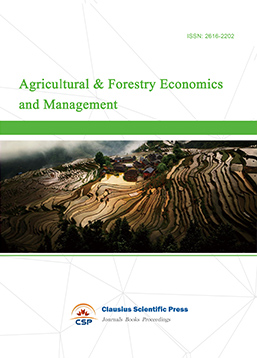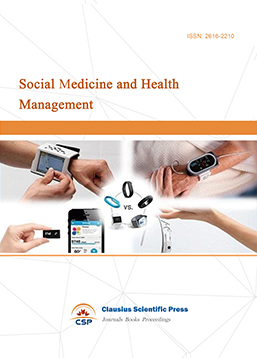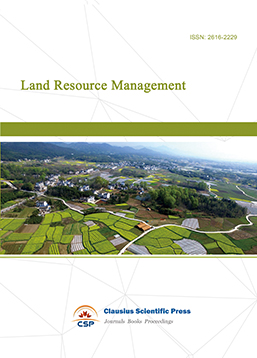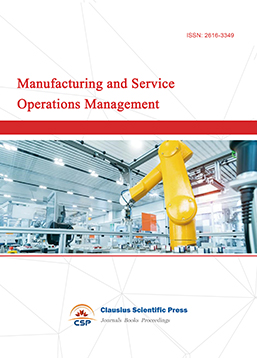Analysis of Trade Influencing Factors and Trade Potential of China's New Energy Vehicles under Carbon Emission—Evidence from "Belt and Road" Countries
DOI: 10.23977/ieim.2023.060920 | Downloads: 348 | Views: 2026
Author(s)
Xiaohong Hu 1, Jie Pan 1
Affiliation(s)
1 School of Business Administration, Donghua University, Shanghai, China
Corresponding Author
Jie PanABSTRACT
The purpose of this research is to examine the trade influencing factors and trade potential of China's new energy vehicles in "Belt and Road" countries. We adopt the gravity model and focus on the impact of carbon emissions. Our results show that: (1) carbon emission level, GDP, and distance are the most important factors affecting trade; (2) China's new energy vehicles have high trade potential in "Belt and Road" countries; (3) carbon emission trading can promote the export of new energy vehicles.
KEYWORDS
Trade influencing factors, Trade potential, New energy vehicles, Carbon emission, Belt and Road countriesCITE THIS PAPER
Xiaohong Hu, Jie Pan, Analysis of Trade Influencing Factors and Trade Potential of China's New Energy Vehicles under Carbon Emission—Evidence from "Belt and Road" Countries. Industrial Engineering and Innovation Management (2023) Vol. 6: 142-152. DOI: http://dx.doi.org/10.23977/ieim.2023.060920.
REFERENCES
[1] Abdul S, Khan R, Jian C et al (2019) Environmental, social and economic growth indicators spur logistics performance: from the perspective of South Asian Association for Regional Cooperation countries. J Clean Prod J 214:1011–1023.
[2] Ahakwa I, Yang J, Agba Tackie E, Bankole K (2021d) Exploring the Impact of Traditional Communication Channels on Customer Purchase Decision: A Case Study of University Students in Ghana. SEISENSE Business Rev 1(1):31–44.
[3] Behera SR, Dash DP (2017) The effffect of urbanization, energy consumption, and foreign direct investment on the carbon dioxide emission in the SSEA (South and Southeast Asian) region. Renew Sust Energ Rev 70:96–106.
[4] Bekhet HA, Othman NS (2017) Impact of urbanization growth on Malaysia CO2 emissions: evidence from the dynamic relationship. J Clean Prod 154:374–388.
[5] Chen, S., Liu, Z., Chen, B., Zhu, F., Fath, B. D., Liang, S., Su, M., Yang, J. Dynamic Carbon Emission Linkages Across Boundaries. Earth’s Future 2019, 7, 197–209.
[6] Cui L, Song M (2018) Economic evaluation of the Belt and Road Initiative from an unimpeded trade perspective. Int J Log Res Appl 22(1):1–22.
[7] Ermann, L., Shepelyansky, D. L. Google matrix analysis of the multiproduct world trade network. Eur. Phys. J. B 2015, 88, 84.
[8] Figge L, Oebels K, Offermans A (2017) The effects of globalization on ecological footprints: an empirical analysis. Environ Dev Sustain 19:863–876.
[9] Fu Y, Xue L, Yan Y, Pan Y, Wu X, Shao Y. Energy Network Embodied in Trade along the Belt and Road: Spatiotemporal Evolution and Influencing Factors. Sustainability. 2021, 13(19):10530.
[10] Hafeez M, Chunhui Y, Strohmaier D, Ahmed M, Jie L (2018) Does finance affect environmental degradation: evidence from One Belt and One Road Initiative region? Environ Sci Pollut Res 25:9579–9592.
[11] Han L, Han B, Shi X, Su B, Lv X, Lei X (2018) Energy efficiency convergence across countries in the context of China's Belt and Road initiative. Appl Energy 213(September 2017):112–122.
[12] Khan MK, Sandano IA, Pratt CB, Farid T (2018) China’s Belt and Road Initiative: A global model for an evolving approach to sustainable regional development. Sustainability (Switzerland) 10(11):1–20.
[13] Li H, Wang C, Shang M, Ou W, Qin X (2019) Cooperative decision in a closed-loop supply chain considering carbon emission reduction and low-carbon promotion. Environ Prog Sustain Energy 38(1):143–153.
[14] Li R, Wang Q, Liu Y, Jiang R (2021b) Per-capita carbon emissions in 147 countries: The effect of economic, energy, social, and trade structural changes. Sustain Prod Consump 27:1149–1164.
[15] Liu J, Yuan C, Hafeez M, Yuan Q (2018) The relationship between environment and logistics performance: evidence from Asian countries. J Clean Prod 204:282–291
[16] Lu, Q. L., Fang, K., Heijungs, R., Feng, K. S., Li, J. S., Wen, Q., Li, Y. M., Huang, X. J. Imbalance and drivers of carbon emissions embodied in trade along the Belt and Road Initiative. Appl. Energy 2020, 280, 12.
[17] Wu, X. D., Guo, J. L., Li, C. H., Shao, L., Han, M. Y., Chen, G. Q. Global socio-hydrology: An overview of virtual water use by the world economy from source of exploitation to sink of final consumption. J. Hydrol. 2019, 573, 794–810.
| Downloads: | 25883 |
|---|---|
| Visits: | 737501 |
Sponsors, Associates, and Links
-
Information Systems and Economics

-
Accounting, Auditing and Finance

-
Tourism Management and Technology Economy

-
Journal of Computational and Financial Econometrics

-
Financial Engineering and Risk Management

-
Accounting and Corporate Management

-
Social Security and Administration Management

-
Population, Resources & Environmental Economics

-
Statistics & Quantitative Economics

-
Agricultural & Forestry Economics and Management

-
Social Medicine and Health Management

-
Land Resource Management

-
Information, Library and Archival Science

-
Journal of Human Resource Development

-
Manufacturing and Service Operations Management

-
Operational Research and Cybernetics


 Download as PDF
Download as PDF